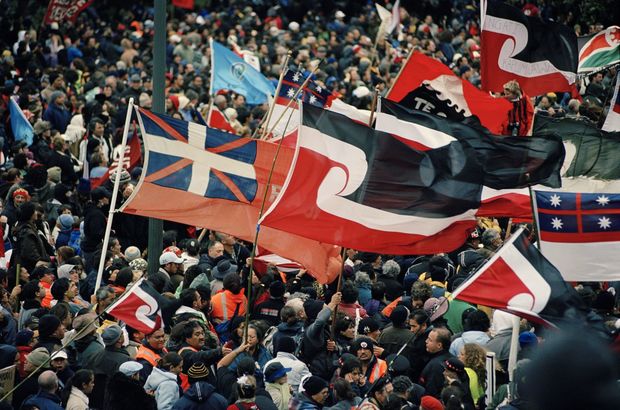
A host of flags accompanied the many thousands of marchers protesting against foreshore and seabed legislation in 2004. On the right is the first New Zealand flag; also prominent is the tino rangatiranga flag, a flag of self-determination, designed in 1989–90. Photograph by Michael Hall. Museum of New Zealand Te Papa Tongarewa, MA_E.003515.
 Aroha Harris (Ngāpuhi, Te Rarawa) is a member of the Waitangi Tribunal and a lecturer in history at the University of Auckland. She is the author of Hīkoi (2004), about political protest in the late twentieth century, and is co-author with Judith Binney and Atholl Anderson of Tangata Whenua: An Illustrated History
Aroha Harris (Ngāpuhi, Te Rarawa) is a member of the Waitangi Tribunal and a lecturer in history at the University of Auckland. She is the author of Hīkoi (2004), about political protest in the late twentieth century, and is co-author with Judith Binney and Atholl Anderson of Tangata Whenua: An Illustrated History
Tangata Whenua has won the Royal Society of New Zealand 2015 Science Book Prize.
In this 2014 interview Aroha Harris talked to Kim Hill about the project.
Photograph of Aroha Harris by Neil Pardington.
Images from the book
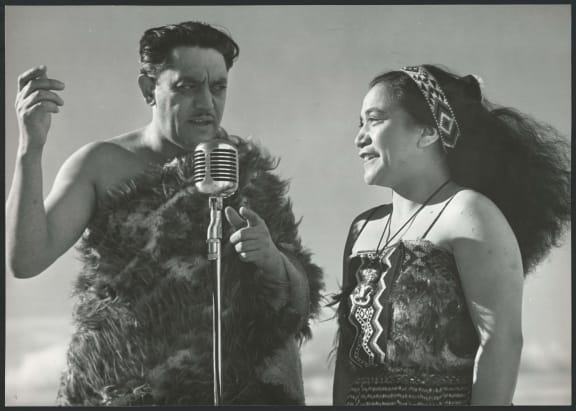

Acclaimed Te Arawa soprano Ana Hato performing with Oriwa Tahupotiki (Edward Oliver) Haddon in about 1940. Both performers were multitalented. Known to her whānau as Whaurua, Hato represented Rotorua at hockey, and was a member of the team that won the Auckland Provincial Cup in 1925. Haddon, a Methodist minister, pharmacist and broadcaster of Ngāti Ruanui, was also an accomplished artist and orator. Alexander Turnbull Library, PAColl-9832-1-04. p359
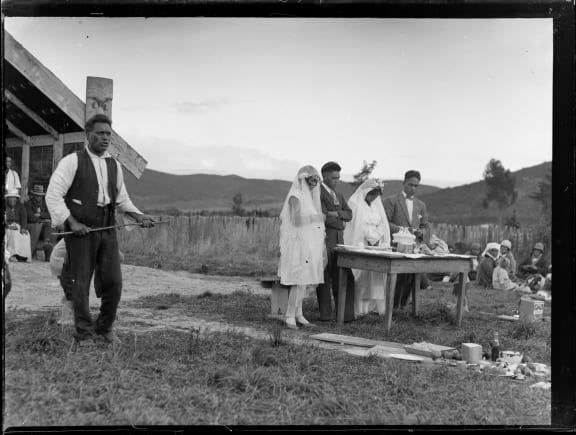

The rhythm of Māori community lives persisted into the twentieth century against a background of nineteenth-century economic, political and cultural turbulence. Morehu Downs addresses guests at the marriage ceremony of Ruinea and Peter Rota at Kōrohe Pā, Lake Taupō, c.1930. The gathering combined Māori custom and western style. Alexander Turnbull Library, WA-12471-G. p353
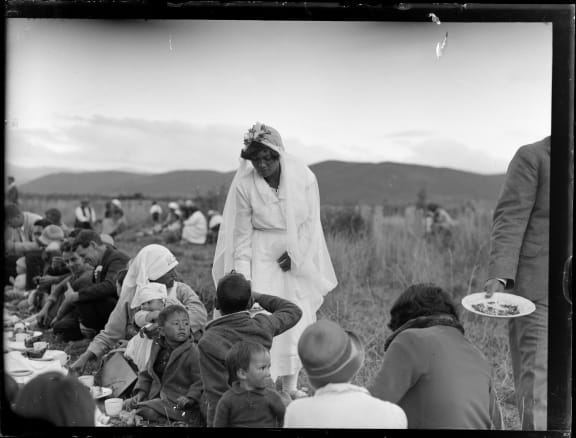

The marriage ceremony of Ruinea and Peter Rota at Kōrohe Pā, Lake Taupō, c.1930.The outdoor hākari was laid out in front of the whare on platforms fashioned from wooden planks. The banquet was followed by wedding cake served to the guests by the bride (dressed in white). Alexander Turnbull Library, WA-12469. p353
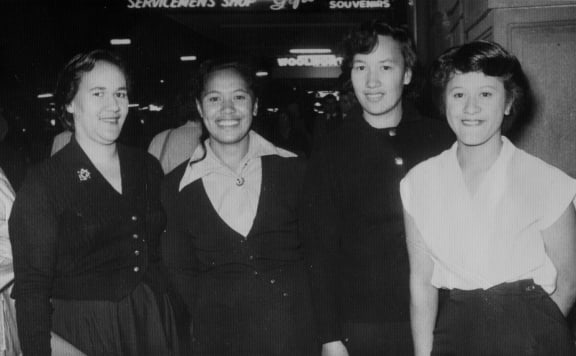

Sisters Elizabeth and Margaret Leef (far left and third from left) on a night out in Auckland city with their friends, c.1959. Private collection. p399
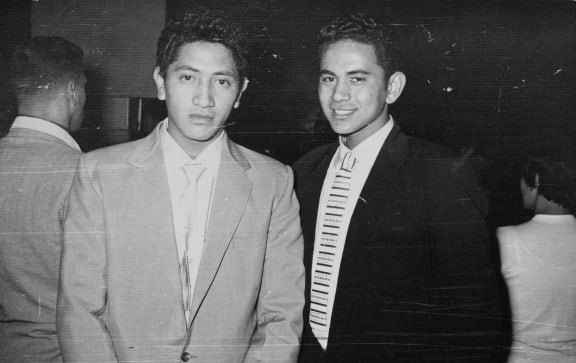

Ray Kiri and Milton Harris at the Maori Community Centre in Auckland, c.1959. Private collection. p399
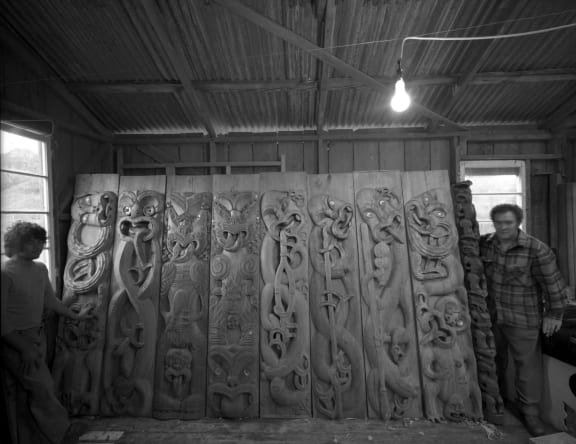

Developed from consultation with Māori communities and leaders, the Department of Maori Affairs’ Tu Tangata policy emerged in the late 1970s, and aimed to provide Māori with greater control over the development and implementation of health, education and employment programmes. These carvers at Motutī, Hokianga, in April 1982, were part of a Tu Tangata community project that revolved around the building of the carved wharenui, Tamatea. Photo: Laurence Aberhart/McNamara Gallery. p428
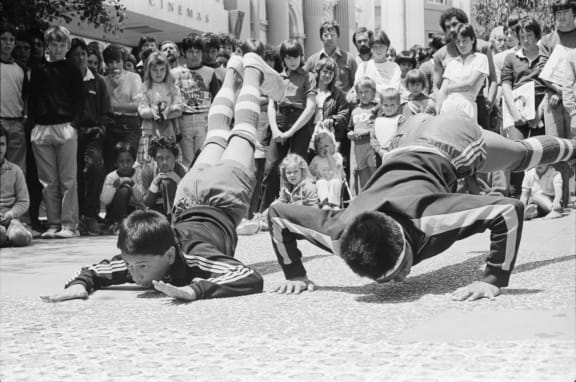

Break-dancers entertain a crowd in Wellington’s Manners Mall, 1984. Throughout the 1980s, many rangatahi embraced break-dancing and other elements of African-American urban hip-hop culture. Alexander Turnbull Library, EP/1984/0163/31-F. p434

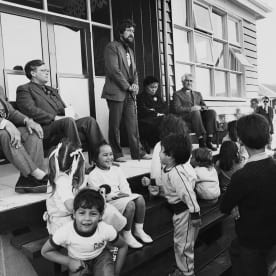
The opening of Te Kura Kaupapa Maori o Hoani Waititi in West Auckland, 1985. The kura was New Zealand’s first Māori-language immersion primary school. Pita Sharples addresses the gathering. Looking on (from left) are educationalist John Bennett, Prime Minister David Lange, Lady Reeves and the Governor-General, Sir Paul Reeves. Photo: Gil Hanly. p435

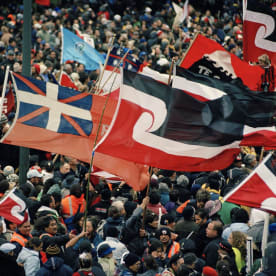
A host of flags accompanied the many thousands of marchers protesting against foreshore and seabed legislation in 2004. On the right is the first New Zealand flag; also prominent is the tino rangatiratanga flag, a flag of self-determination, designed in 1989–90. Photograph by Michael Hall. Museum of New Zealand Te Papa Tongarewa, MA_E.003515. p285
Images from the book

 Aroha Harris (Ngāpuhi, Te Rarawa) is a member of the Waitangi Tribunal and a lecturer in history at the University of Auckland. She is the author of Hīkoi (2004), about political protest in the late twentieth century, and is co-author with Judith Binney and Atholl Anderson of Tangata Whenua: An Illustrated History
Aroha Harris (Ngāpuhi, Te Rarawa) is a member of the Waitangi Tribunal and a lecturer in history at the University of Auckland. She is the author of Hīkoi (2004), about political protest in the late twentieth century, and is co-author with Judith Binney and Atholl Anderson of Tangata Whenua: An Illustrated History


















